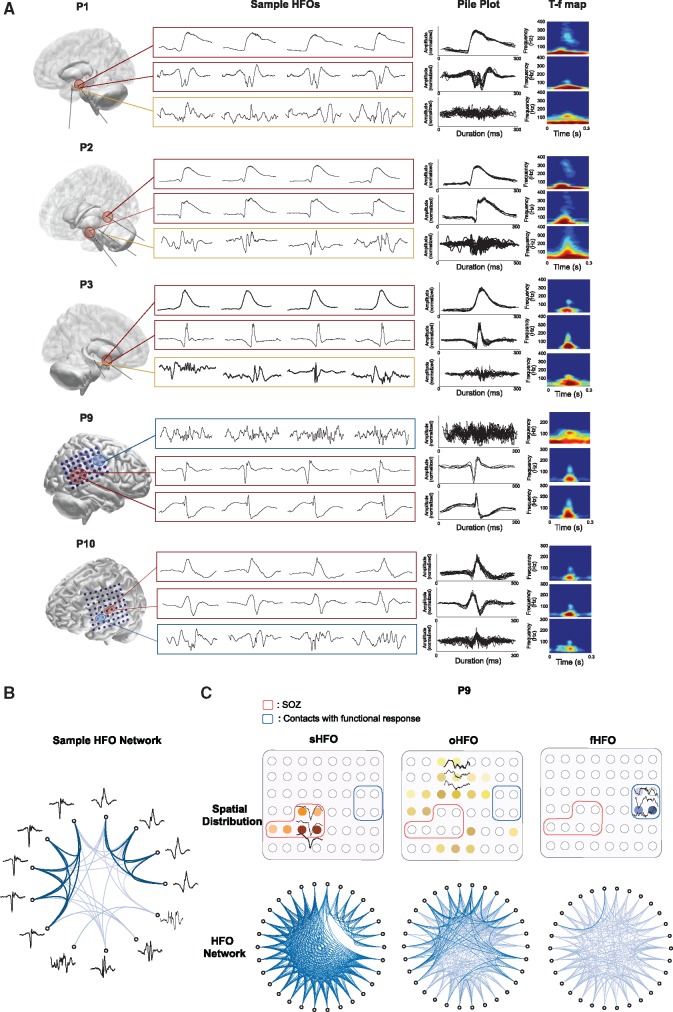Figure 4.
Stereotyped HFOs and HFOs without any repetitive pattern. (A) Examples of HFO subclusters and their spatial locations in five patients. For each HFO group, the pile plots and averaged time-frequency (T-f) map are provided (up to 20 events are shown), the spatial origins are marked on electrode contacts. In Patient 1, repetitive HFOs in different forms were generated by epileptic hippocampal structure. In Patient 2, repetitive HFOs were generated by posterior hippocampus and amygdala, both of which appeared to be epileptogenic. In Patient 3, highly similar ripples were found in the temporal lobe. In these patients, HFOs without a repetitive pattern are commonly observed in brain regions out of the SOZ. In Patients 9 and P10, while recurrent HFO patterns were seen in the SOZ (temporo-parietal and frontal region), the irregular HFOs were mostly seen in the functional motor cortex. (B) Circular network visualizing the distance matrix in 13 HFO samples. HFOs (nodes) are connected by edges that indicate the Euclidean distance (dissimilarity) between two events. While highly correlated similar HFOs provide linkage in dark shades, HFOs in distinct shapes provide weak or invisible connections. (D) Circular networks in three groups of HFOs, each being composed of 30 events recorded inside the SOZ, out of the SOZ, and inside the motor area in Patient 9. The compact connectivity and the blank space in between suggest the existence of two distinct patterns in the sHFO group. The connectivity is weakest in the fHFO groups compared to the other two suggesting the non-repetitive nature of fHFOs.

